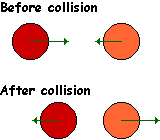jjabrams55
Science fiction fantasy
- Joined
- Mar 28, 2014
- Messages
- 93
Okay... outer space is not empty. It's full of cosmic rays and radiation. First an explanation though.
Cosmic rays: Are subatomic particles flying at high velocities, sometimes close to light speed. Emitted by the sun and distant cosmic events. Space has cosmic rays everywhere.
Radiation: This is more familiar. The energetic rays that give you cancer. Gamma rays and so on. Even visible light is included here.
So the question is, would this work? Would it even have a prayer of working? Or is this solely in the mind of science fiction? The following for your consideration:
Cosmic Slipstream: The idea is to somehow remove the cosmic rays ahead of you and then something should happen. You know how having lower pressure above a wing creates lift because it creates a vacuum? Same idea here. Moving the cosmic rays out from ahead of you should create a vacuum that your ship gets sucked into, propelling it forward constantly. At least I suppose, since nature seems to always try to fill a vacuum when it is created.
Or would that not work. And if not? Why not? Alternately, if that didn't work, what if the slipstream was so powerful that it moved matter, radiation, AND cosmic rays (technically matter, just really small bits) out from ahead of the ship? Would that create the desired vacuum effect slipstream.
Once again, there is no proof we can even do this. This is just wishful thinking as an alternative to our pathetic rockets. So prove me wrong, please. That is why I post here. To learn.
Cosmic rays: Are subatomic particles flying at high velocities, sometimes close to light speed. Emitted by the sun and distant cosmic events. Space has cosmic rays everywhere.
Radiation: This is more familiar. The energetic rays that give you cancer. Gamma rays and so on. Even visible light is included here.
So the question is, would this work? Would it even have a prayer of working? Or is this solely in the mind of science fiction? The following for your consideration:
Cosmic Slipstream: The idea is to somehow remove the cosmic rays ahead of you and then something should happen. You know how having lower pressure above a wing creates lift because it creates a vacuum? Same idea here. Moving the cosmic rays out from ahead of you should create a vacuum that your ship gets sucked into, propelling it forward constantly. At least I suppose, since nature seems to always try to fill a vacuum when it is created.
Or would that not work. And if not? Why not? Alternately, if that didn't work, what if the slipstream was so powerful that it moved matter, radiation, AND cosmic rays (technically matter, just really small bits) out from ahead of the ship? Would that create the desired vacuum effect slipstream.
Once again, there is no proof we can even do this. This is just wishful thinking as an alternative to our pathetic rockets. So prove me wrong, please. That is why I post here. To learn.


